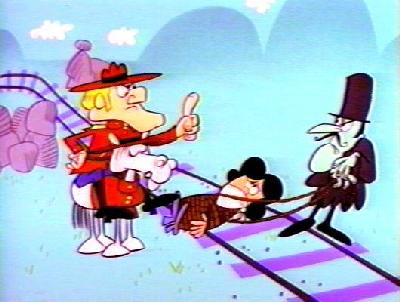 Strindberg's Star by Jan Wallentin, translated by Rachel Willson-Broyles
Strindberg's Star by Jan Wallentin, translated by Rachel Willson-Broyles What is it about Scandinavians that give their crime fiction that certain flavor? The cohesiveness of their communities? A willingness to examine ugly facets of human nature in a matter-of-fact way? Their stoic acceptance of the cold? Whatever it is, we're lucky to see more of their books translated into English. One of the newest translations is Strindberg's Star by Jan Wallentin, a best seller in Sweden, France, and Germany. It's a genre-straddler that combines components of a thriller, adventure, and historical fiction with elements of the occult.
What is it about Scandinavians that give their crime fiction that certain flavor? The cohesiveness of their communities? A willingness to examine ugly facets of human nature in a matter-of-fact way? Their stoic acceptance of the cold? Whatever it is, we're lucky to see more of their books translated into English. One of the newest translations is Strindberg's Star by Jan Wallentin, a best seller in Sweden, France, and Germany. It's a genre-straddler that combines components of a thriller, adventure, and historical fiction with elements of the occult.The book begins near Falun, Sweden, when a cave diver named Erik Hall takes a solo dive into a long-abandoned and flooded copper mine. There he discovers a corpse. While the body is shockingly well preserved, there are reasons to believe it has been dead for many years. And that's not the only mystery surrounding it: the hands are clutching an ankh, and there is strange writing in the cave.
 |
| Cave diving is extremely dangerous, but doesn't it look fun? |
Erik's discovery becomes a media sensation. Word leaks out about the ankh and other odd findings. Erik meets Don Titelman during the filming of a TV program, and afterward, he pelts Don with phone invitations to come see him. There may be something Erik hasn't shared with journalists. He wants Don's help in interpreting his discoveries.
 |
| Modern symbols |
Don's acquaintance with Erik ends badly, and Don is wrongfully accused of a crime. He and an attorney sent to represent him, the attractive Eva Strand, are kidnapped and held by Germans. The two captives listen to a tale about an inconceivably strange device and its history, which includes real-life figures such as Nils Strindberg, a photographer who perished in an 1897 hot-air balloon expedition to the Arctic. Don is threatened with dire consequences if he doesn't give them what they want. Eva and Don manage to escape, and the story becomes their transcontinental quest to elude capture, while attempting to solve difficult clues that could lead them to some missing artifacts with unusual powers.
Wallentin was very ambitious with this debut novel. It's an information-packed and complex plot that involves the Nazis and figures from mythology, set in multiple locations over a century's time, and populated by both real and fictional characters. Let's take a look at the results.
 |
| Likable hero and dastardly villain |
Another problem is the way in which the plot's requirements are met with coincidence and convenience. Don just so happens to pick up a certain object. Luckily, he has a reclusive sister who's a hacker. Eva does something she should have known better than to do.
 |
| Nils Strindberg was only 25 when he died |
Here's why:
Wallentin, a journalist, knows how to research and write, and Rachel Willson-Broyles provides a smooth translation. The settings are cinematic, and some of them are downright spooky: the flooded copper mine, the cemetery in Ypres, and the Arctic. The physical isolation is exacerbated by cold and darkness or wind and rain or snow. The intrinsic suspense is heightened by the characters' vulnerability. They're stubborn or unduly optimistic; inappropriately dressed, ill-equipped or exhausted.
 |
| Tyne Cot cemetery on the Ypres Salient, Belgium |
While the amount of historical information keeps this plot from the quick pacing of a Dan Brown's The Da Vinci Code, this book is not meant to be a simple page-turner. Wallentin utilizes real characters and events in weaving his fictional plot, and he infuses it with the supernatural as do writers such as John Connolly and Dan Simmons. The mythology and literary clues are intriguing, and the properties of the artifacts, both physical and theoretical, are fascinating. Wallentin's book has similarities to Jules Verne's classic science fiction, but it's also similar to Ian Caldwell and Dustin Thomason's literary thriller, The Rule of Four, and books by Francis Clifford and Lionel Davidson because it poses moral questions. Strindberg's Star is an original book that stretches the imagination and exercises the brain.
Ultimately, this book is about the double-edged quality of scientific discoveries and the nature of responsibility and guilt. Science has been used to both benefit and purposefully harm humankind, often at the hands of the same people. Should researchers be held responsible for their discoveries, and CEOs for the use of the products based on this research? There are important questions about the morality and wisdom of certain scientific explorations. There's a reason Wallentin makes the source of scientific knowledge a particular symbolic place. The actions of some, who feel no guilt, can leave unbearable burdens of guilt for others who aren't remotely responsible. A moment's actions can lead to a life of feeling guilty. Just how responsible are these characters for their fate?
I'll be thinking about Strindberg's Star. Despite its flaws, it's a timely and worthwhile read. Take it to the beach. The plot's action slows at times so Wallentin can provide fascinating historical background, yet the imaginative plot will keep readers turning these pages. I'll look forward to what Wallentin comes up with next.
Note: I received a free digital galley of Strindberg's Star from Viking Press. The book was published last month. August Strindberg was on Viking's early list of authors, and I wonder what he'd say upon seeing himself, his acquaintance Sven Hedin, and his young relative Nils in this Viking publication.



No comments:
Post a Comment